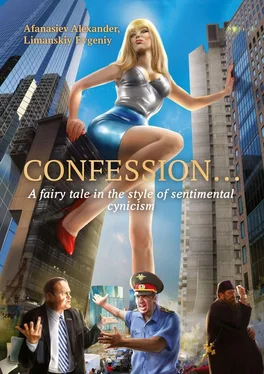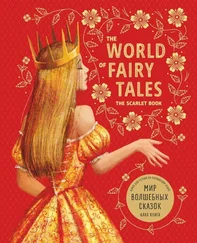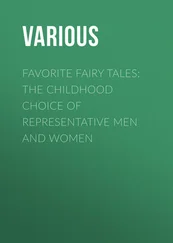I remember that I was struck by the gradation in the Top class. The Top-Low subclass includes all millionaires. You earned a million dollars and you are already in the elite of society. Further rudely Top-Middle subclass, I do not exactly remember, but let us say it started from 100 million dollars of personal capital, well, and to one billion. However, the most interesting thing is that becoming a billionaire does not mean getting into the Top-Top subclass. The Top-Top subclass according to Zorin includes the families of the Rockefellers and Kennedy, but the upstart Howard Hughes is a representative only of the Top-Middle class, despite all his billions. That is, the Top-Top class includes the families with centuries-old traditions of billionaires, at this level there is already a complete fusion of capital and power. The Kennedy clan is, in this sense, a textbook example.
Zorin also argued that if movement within the class is still possible, then moving between classes, and even more moving up, is more an exception, and quite rare and deserves a separate study in each case. Zorin gives an example of the talented student Henry Kissinger, whom the Rockefeller’s collector remarked and provided him with a successful start, appointing him a Rockefeller scholarship, made a dizzying political career and ended up in the political elite of American society and the world.
To modern Russia, in my opinion, this classification according to Zorin can be attributed in full, well, maybe with some reservations, for example, regarding the Top class. Of course, the Top class is now in the process of formation and the merging of the power and capital is only still taking place, and there is no possibility to speak about any traditions in this area. In my opinion, taking into account the depreciation of the dollar from the time of my youth to the Top-Low subclass, it is possible to include all those who have personal capital from 5 to 100 million dollars (of course, we are talking about the ruble equivalent). Accordingly, to the Top-Middle subclass we include all those who own from 100 million Up to 1 billion.
It is not very clear what to do with the Top-Top subclass. On the one hand, there is still no such subclass in the classical sense, because there are no traditions, but on the other, what to do with those who have a billion or more dollars. My suggestion is to simplify and to include all these people to the Top-Top subclass. As a commentary to the existing status quo, it can also be added that, in my persistent conviction, at least 80 percent of the origin of the present Top class is directly related to crime or violation of the law to a greater or lesser extent. The remaining 20% owe their origin to talent, diligence and banal luck.
When I reread the previous paragraph, after a while, I realized that it was a rather amateurish way of looking at things, and everything is actually very clear with the Top-Top subclass in Russia, and is as follows. It was in the US it took several centuries for a Top-Top subclass born and has formed, but in Russia this subclass was formed in about 10—15 years starting from 1987—88 years. Because it was formed very simply. The most energetic and active representatives of the highest bureaucracy simply divided the wealth of the country among themselves, and by the end of the specified period the freshly baked Top-Top subclass simply just was born. It is clear that bureaucrats shared the country’s wealth by the billions, and so these senior bureaucrats have become after all our new Top-Top subclass. Of course, in the process of sharing of billions someone was trampled. But those who survived the sharing just got a billion or more dollars and took the highest point in the socio-economic structure of the society. Next a smaller division of wealth was. Regional bureaucrats held a similar local dividing of that is not useful Moscow officials, and respectively formed a Top-Middle subclass. But the previous paragraph should remain as an example of inexperienced and superficial look at the issue.
As a general measure of the gradation of classes and subclasses, of course, money or income level is. With the first two classes, everything is clear. The income of Low class is accordingly for subclasses approximately 0—10, 10—30 and 30—50 thousand rubles of per person per month. The Middle class is respectively 50—100, 100—500 and 500—1500 thousand rubles. With the Top class it is a little more difficult, because I don’t fully know the information about this class, but nevertheless it is, for example, 1500—5000, 5000—25 000 and more than 25 000 thousand rubles a month.
Just as in the US, vertical upward movement is a rather limited phenomenon. The majority of the population happily spend their lives at the level at which they were given the happiness to be born. Of course, each of us dreams of a better life, but natural laziness and the resistance of the environment jammed these dreams in the bud. Sooner or later in 90% of cases individual calms down and safely exists at the level at which the force of counteraction of the external environment becomes stronger than the inner aspiration to a better life.
In addition to the upward movement, there is also a downward movement, and classic examples are alcoholism or drugs that deprive a person of human image and are a powerful press that moves a person to the lowest layers of society. In addition, of course, all cases associated with crime; as a result, a person either loses all his movable and immovable, or simply loses the status of a free man and, at least, deprives himself of the opportunity to move up. But this is enough about the downward movement, because, the most interesting is it moving up, and each case of such movement is a unique phenomenon and it is the more unique, the more layers of society the individual managed to overcome as a result.
If we consider different ways and possibilities of moving between classes, I personally I am most interested in talent, as the basis for vertical displacement. Undoubtedly, each case of such displacement deserves a separate consideration. By the word talent, I mean any human abilities developed much more than of ordinary people, and is the main driver in the development of a particular individual.
I have such an example and would like to consider it in more detail, first of all to understand for myself what the secret of success of an ordinary girl who emerged from the Low-Low, and by the age of 24 reached the Top-Low subclass, I recall, by my classification this is level from 5 million dollars.
Before going directly to the main narrative, I would like to draw some parallels between this narrative and some historical and not very heroes. And the first parallel, as it does not seem ridiculous (strange), I will call the story of the famous naturalist Seton Thompson “The Slum Cat”. I read this sincere and touching story in my childhood, and it impressed me so much that I still consider it to be a model of truthful narrative and example of author’s real love to his hero. And although this is just a story of a homeless she cat, but first, my story has similar points with the history of this remarkable cat in terms of meteoric rise of her image and status (both the cat and my main heroine), and, most importantly, in her ability to confidently settle in and get comfortable in this new status. And secondly, God grant me to portray the story of my heroine so truthfully and with such love, as the famous naturalist managed to do.
But jokes aside and now I would like very briefly to consider some really historical characters that had fate similar to the short biography of our heroine.
But before this, we will borrow from Wikipedia two definitions that apply to all the characters listed below.
Hetaera (from Greek ἑταίρα – friend, companion) – in Ancient Greece, a woman leading a free, independent way of life, a public woman, a courtesan. Originally mainly from slaves, later also free women. Famous Hetaeras were, as a rule, well educated.
Читать дальше












